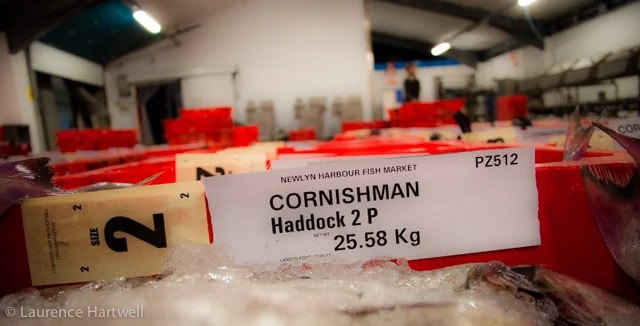The report, entitled "When does fishing lead to more fish? Community consequences of bottom trawl fisheries in demersal food webs," was commissioned by the Wageningen Institute for Marine Resources and Ecosystem Studies (IMARES) in the Netherlands. The findings were published Wednesday by the London-based Royal Society.
 |
| Plaice and sole were studied |
The study focused on flatfish such as plaice and sole, and how those species — and their food — reacted to standard beam trawling. Some of the results were surprising. "What we found is that the indirect effects or side-effects of trawling — namely, the sort of selective removal of certain types of bottom life — sort of makes the system more productive in terms of food for the fish that fishermen target," said Tobias Van Kooten, one of three authors of the report, along with Daniel van Denderen and Adriaan Rijnsdorp.
The focus of the research was to model the effects of bottom trawling on fish species and food sources that are either resistant or susceptible to bottom trawling. The authors found there are indications bottom trawling may actually "increase the availability of food and promote growth, and even yield of target fish species."
Van Kooten said the scientists used a food web model to come to their conclusions. "(We took) a number of assumptions about how scientists think that the interaction between fisheries and fish works, and put them together in a food web model that allows you to evaluate the consequences of those assumptions," Van Kooten explained. "The results you get from the total (food web) can be very different from the individual pieces."
Expected to spur controversy
The study's results will undoubtedly generate discussion, especially given the environmental and habitat-based concerns that have been expressed about bottom trawling over the years. In fact, some have called for the fishing method to be banned altogether in Canadian waters. In Newfoundland and Labrador the issue of bottom trawling has been a controversial one given the high value of fish species harvested that way — like shrimp.
Those who oppose it insist it destroys sensitive marine habitat and negatively affects species like snow crab. Those who support it say the damage is limited and warn that a ban of bottom trawling would be the end of commercial fishing in the Northwest Atlantic. Van Kooten said it is clear there are negative impacts with respect to bottom trawling. But he says those drawbacks should be considered in concert with any potential benefits. If anything, he says the report's findings show how important it is to have the complete ecosystem picture in focus when making fish management decisions. "We definitely realize this will lead to many questions from many people, but we are willing to talk with anyone who is willing to listen," he said. "The assumptions that give rise to these results are fairly accepted mechanisms for how people think trawling affects the ecosystem."
In addition to being published by the Royal Society, the findings were also presented at an ecology conference in London, England in August, and are also going to be featured during an international conference in Iceland later this month.















